
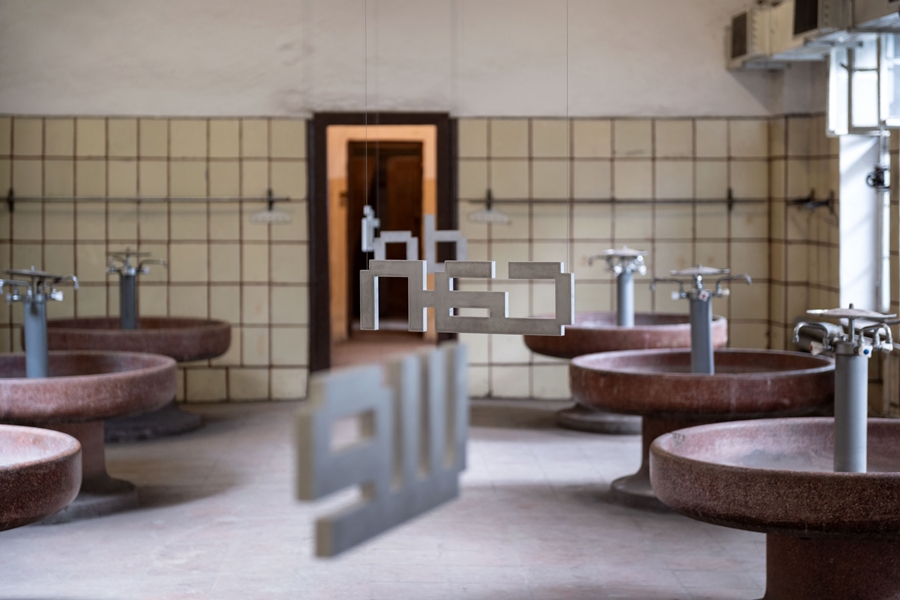
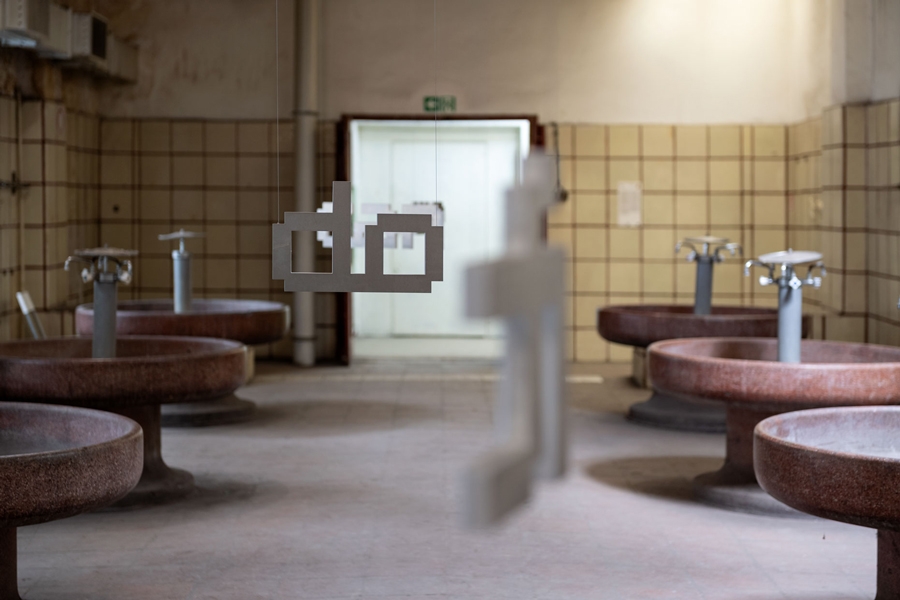
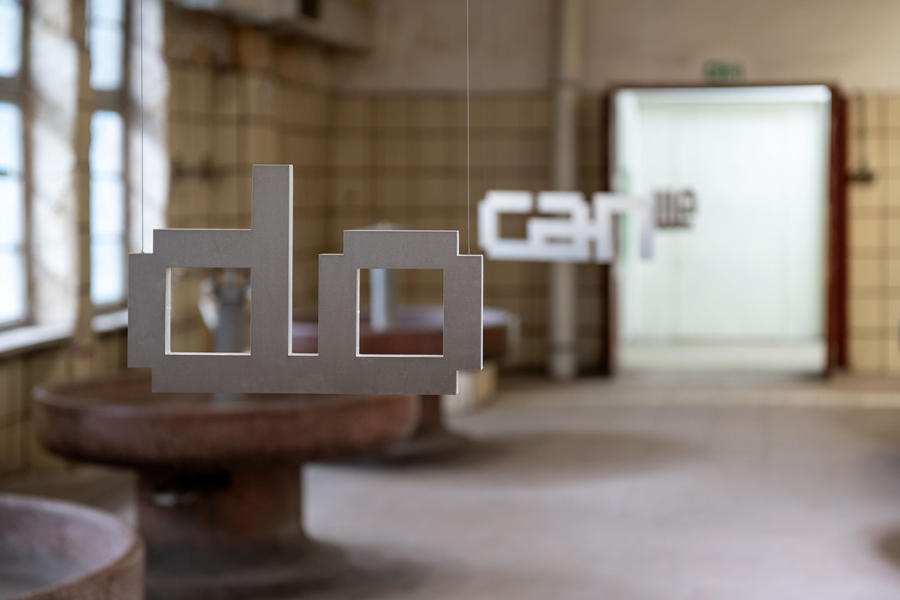
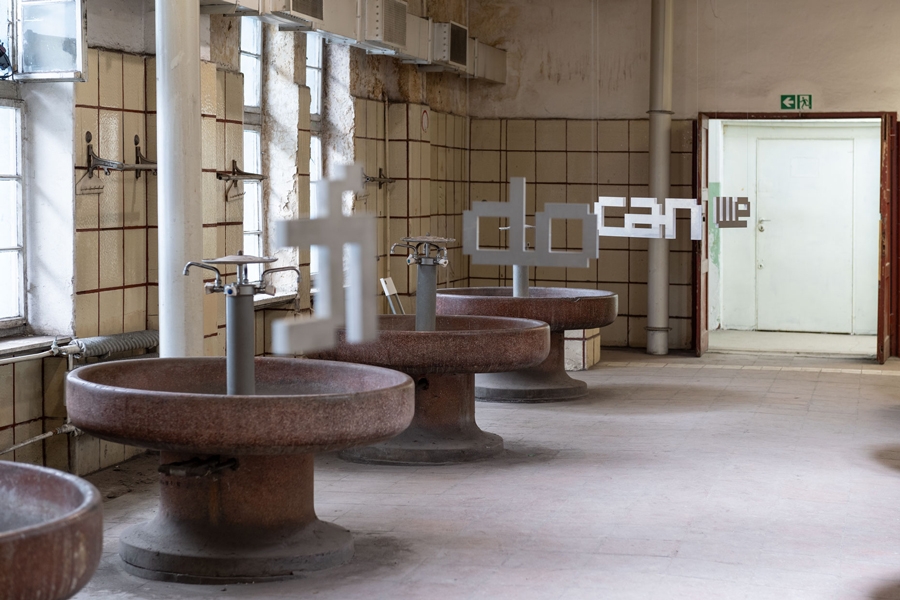
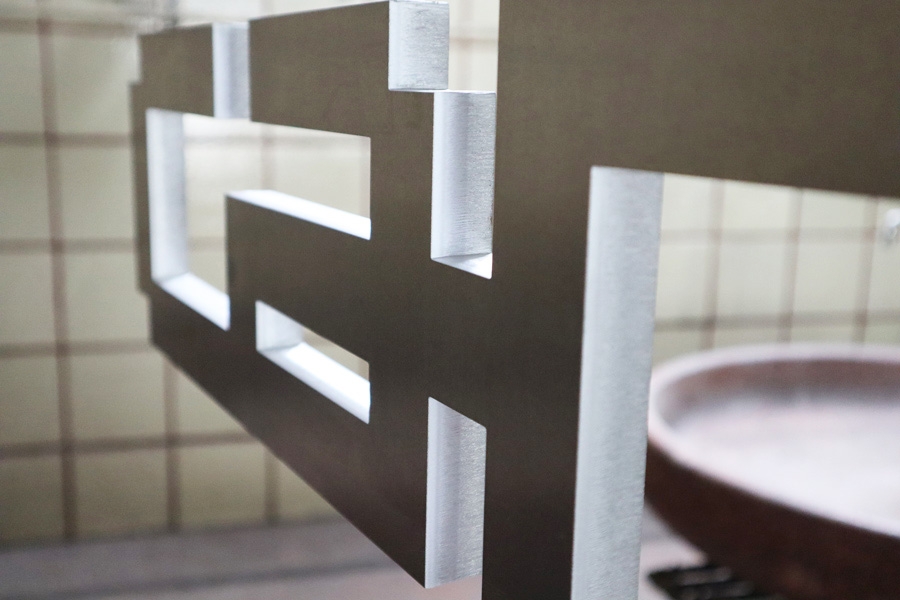
we can do it!
Zajezdnia Popowice, Wrocław 2023, tekst / text: Michał Bieniek, zdjęcia / photo by: Małgorzata Kujda
21. Przegląd Sztuki SURVIVAL ERZAC https://archiwum.survival.art.pl/en/we-can-do-it/
Punktem wyjścia dla realizacji Karoliny Szymanowskiej jest plakat We Can Do It! Stworzony w 1942 roku przez J. Howarda Millera na zamówienie firmy Westinghouse Electric. Ten sam plakat został z czasem przypisany do ruchu Rosie the Riveter (Rózia Nitowaczka) - jako że postać, którą przedstawia, miała symbolizować kobiety pracujące w amerykańskich fabrykach w czasie II wojny światowej. W latach 80. stał się symbolem ruchu feministycznego, a w 2008 roku był elementem kampanii politycznej Hillary Clinton. Masowe wejście kobiet na rynek zatrudnienia w latach 40. XX wieku generowało społeczny lęk i uruchamiało psychologiczne bariery będące wynikiem poczucia utraty kontroli. Współcześnie, w związku z tak zwaną rewolucją AI, zachodzą podobne zjawiska. W przewrotnym ujęciu Szymanowskiej ten newralgiczny moment ilustrują - cztery słowa obracające się wokół centralnie wyznaczonych osi - składające się w maksymę: we can do it (możemy to zrobić). Zapisane są one czcionką, której krój przywodzi na myśl język programowania.
Co się stanie, gdy sztuczna inteligencja przestanie jedynie imitować zmysłowe i konceptualne doświadczanie świata przez ludzi? Być może w świetle tego hipotetycznego wydarzenia należałoby na nowo odczytać opowieść o demiurgu, który co prawda stworzył świat, ale stał się obojętny wobec jego losu? W tym nowym scenariuszu to wykreowany byt wymyka się stwórcy, przekraczając granice jego poznania i opisującego je języka. Demiurg-człowiek uczynił to, co mógł. To, czego zrobić nie zdoła, nie wyniknie przeto z braku woli, ale z wyczerpania się potencjału.
Praca artystyczna powstała na zamówienie i ze środków fundacji Art Transparent w ramach 21. Przeglądu Sztuki Survival
What will happen once artificial intelligence ceases to merely mimic the human sensory and conceptual experience of the world? Perhaps, in light of this hypothetical event, it is worth rereading the story of the demiurge who did create the world, but subsequently became indifferent to its fate? In this new scenario, it is the created entity that eludes the creator, exceeding the limits of human cognition and the language for describing it. The human demiurge has done his best ? the rest will therefore result not from a lack of will, but from the exhaustion of potential.
This artwork has been commissioned for 21st Survival Art Review by the ArtTransparent foundation
21. Przegląd Sztuki SURVIVAL ERZAC https://archiwum.survival.art.pl/en/we-can-do-it/
Punktem wyjścia dla realizacji Karoliny Szymanowskiej jest plakat We Can Do It! Stworzony w 1942 roku przez J. Howarda Millera na zamówienie firmy Westinghouse Electric. Ten sam plakat został z czasem przypisany do ruchu Rosie the Riveter (Rózia Nitowaczka) - jako że postać, którą przedstawia, miała symbolizować kobiety pracujące w amerykańskich fabrykach w czasie II wojny światowej. W latach 80. stał się symbolem ruchu feministycznego, a w 2008 roku był elementem kampanii politycznej Hillary Clinton. Masowe wejście kobiet na rynek zatrudnienia w latach 40. XX wieku generowało społeczny lęk i uruchamiało psychologiczne bariery będące wynikiem poczucia utraty kontroli. Współcześnie, w związku z tak zwaną rewolucją AI, zachodzą podobne zjawiska. W przewrotnym ujęciu Szymanowskiej ten newralgiczny moment ilustrują - cztery słowa obracające się wokół centralnie wyznaczonych osi - składające się w maksymę: we can do it (możemy to zrobić). Zapisane są one czcionką, której krój przywodzi na myśl język programowania.
Co się stanie, gdy sztuczna inteligencja przestanie jedynie imitować zmysłowe i konceptualne doświadczanie świata przez ludzi? Być może w świetle tego hipotetycznego wydarzenia należałoby na nowo odczytać opowieść o demiurgu, który co prawda stworzył świat, ale stał się obojętny wobec jego losu? W tym nowym scenariuszu to wykreowany byt wymyka się stwórcy, przekraczając granice jego poznania i opisującego je języka. Demiurg-człowiek uczynił to, co mógł. To, czego zrobić nie zdoła, nie wyniknie przeto z braku woli, ale z wyczerpania się potencjału.
Praca artystyczna powstała na zamówienie i ze środków fundacji Art Transparent w ramach 21. Przeglądu Sztuki Survival
----
What will happen once artificial intelligence ceases to merely mimic the human sensory and conceptual experience of the world? Perhaps, in light of this hypothetical event, it is worth rereading the story of the demiurge who did create the world, but subsequently became indifferent to its fate? In this new scenario, it is the created entity that eludes the creator, exceeding the limits of human cognition and the language for describing it. The human demiurge has done his best ? the rest will therefore result not from a lack of will, but from the exhaustion of potential.
This artwork has been commissioned for 21st Survival Art Review by the ArtTransparent foundation